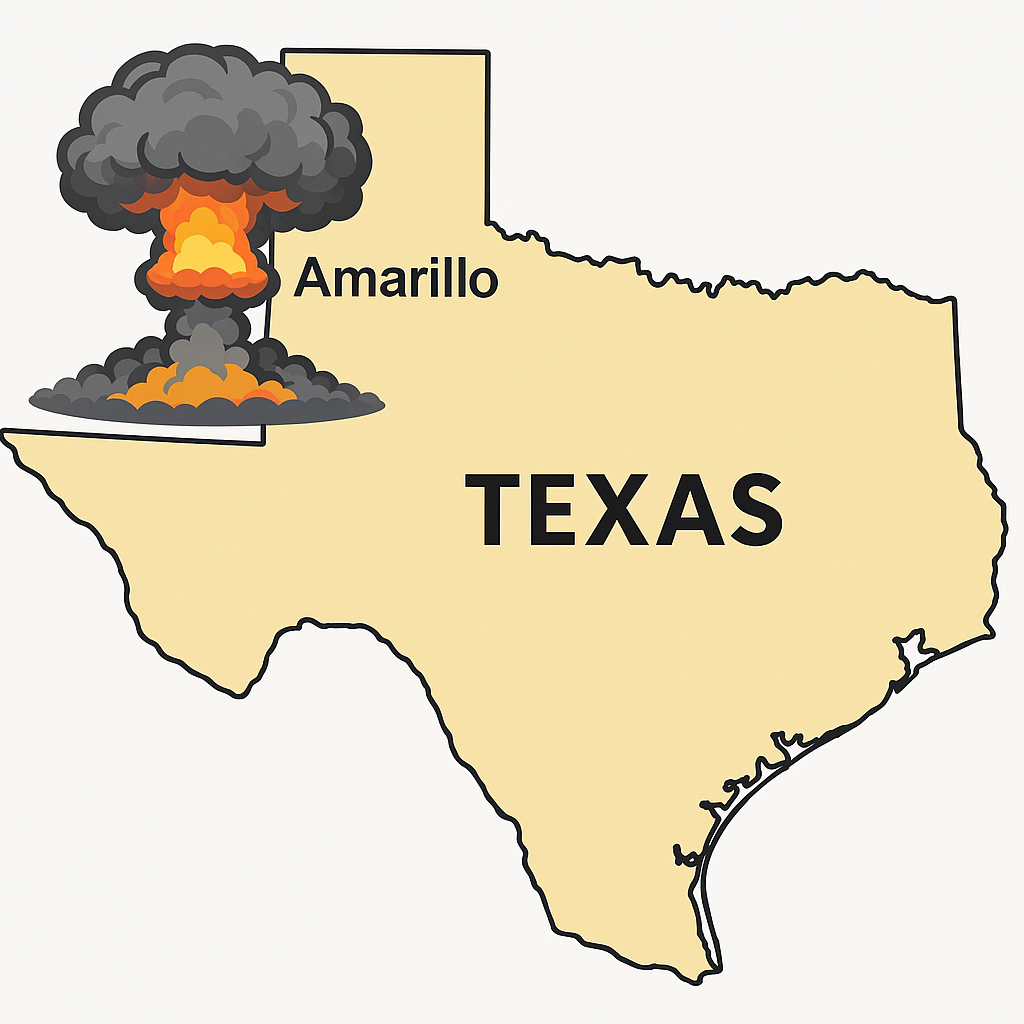Preface
I am a 80- year old grandfather with 6-grandchildren. This post is for them. There is an old saying, “fight fire with fire” that originates from a firefighting technique to stop an uncontrolled wildfire.
Watch this short 6- minute eye opening video:
Or listen to this 13-minute “Deep Dive Podcast “:
Amarillo’s got a reputation for its relentless wind, dramatic thunderstorms, and one very serious claim to fame—it’s the only place in America where nuclear bombs are assembled and dismantled. The facility is called Pantex.
Now, a few miles away, they plan to build the largest AI Data Center in the United States, powered by nuclear reactors and natural gas. The project is called Fermi America’s HyperGrid campus.
Former Texas governor and Department of Energy Secretary Rick Perry promises shiny things: AI supercomputers powered by four nuclear reactors, each costing $10+ billion. But look closer, and a darker story emerges.
The Decade Before Nuclear Arrives
It will be at least ten years before these nuclear reactors are online (if ever). Meanwhile, the HyperGrid site will run almost entirely on natural gas—gigawatts of it. And make no mistake: all users will pay for the new gas plants through higher electricity bills.
- Over 10 million tons of CO₂ annually — equal to adding 2.2 million cars to U.S. roads.
- Daily emissions equal to every car in Houston driving at once (~2.3M cars).
- One hot day’s pollution = the entire annual CO₂ footprint of the city of Amarillo.
- Equivalent to the daily fossil-electricity usage of 200,000 Texas homes.
And Amarillo is just one project. Nationally, by 2032, the 80 new gas-fired power plants being built to run AI data centers will pour out as much CO₂ each year as 34 million cars driving on America’s roads.
And then there’s the water. Amarillo drinks from the shrinking Ogallala Aquifer and fickle Lake Meredith. Companies promise “dry cooling” and recycling, but when the next drought hits, where will the millions of gallons come from?
Amarillo Isn’t Alone
- Virginia – Data Center Alley now consumes more power than some U.S. states. Dominion Energy admits it must burn more fossil fuel just to keep up.
- Iowa & Nebraska – Meta, Google, and Microsoft drain billions of gallons of groundwater, straining farms and towns.
- Great Lakes Region – New mega-data centers threaten to siphon water supplies that sustain entire regions (WTTW News).
- Arizona – Phoenix server farms compete with homes and agriculture for water in triple-digit heat.
The pattern is everywhere: energy-hungry, water-thirsty, pollution-heavy campuses built faster than grids or aquifers can handle.
The Hidden Cons of AI Data Centers
Beyond Amarillo, here’s what the public faces whenever one of these mega-campuses is announced:
- They Don’t Serve Us
- Data centers primarily benefit Silicon Valley billionaires and Big Tech, not local communities.
- The public pays the costs, while profits flow elsewhere.
- Minimal Job Creation
- Despite their enormous size, most centers create only a few dozen to a few hundred permanent jobs.
- Communities sacrifice land, water, and air for very little economic return.
- Soaring Utility Bills
- New plants and transmission lines are financed by ratepayers.
- Residents’ electric bills rise, while corporations enjoy tax breaks.
- Tax Incentives Rob Local Budgets
- Multi-billion-dollar firms often negotiate huge tax abatements, starving schools, healthcare, and infrastructure.
- Noise & Light Pollution
- The endless hum of cooling systems and blinding floodlights degrade quality of life and wildlife habitats.
- Diesel Generators = Toxic Bursts
- When the grid is strained, dirty diesel generators fire up, spewing PM2.5, NOx, and CO₂—as bad as thousands of cars.
- Heat Islands & Habitat Loss
- Exhaust systems can raise local temperatures, while thousands of acres of farmland are paved over.
- Local Infrastructure Damage
- Heavy trucks during construction wreck roads and stress emergency services—with no matching tax contributions.
- Grid Reliability Risks
- AI centers won’t power down during shortages, meaning homes, hospitals, and businesses face blackouts while server racks stay cool.
- Security Targets
- These giant energy+AI hubs become prime cyber and physical targets, increasing community risk.
- No Transparency
- Deals are cut behind closed doors, and locals often find out only after it’s too late to object.
The Pattern
- Massive Energy Loads – Utilities lean on gas and coal to fill the gap.
- Hidden Water Footprints – Millions of gallons vanish into cooling towers.
- Green Promises, Delayed Delivery – Nuclear, renewables, carbon capture: promised for the future, missing today.
- Local Communities Pay – The pollution, the bills, the environmental sacrifice are immediate.
A Question for All of Us
We are told AI will cure disease, optimize crops, and fight climate change. Maybe one day. But right now, we’re burning gas, draining aquifers, and raising bills to digitize the world for the benefit of a few.
Are we building a future our grandchildren can thrive in—or one where they inherit empty reservoirs, hotter skies, polluted air, and promises that never arrived?
Progress is not evil. But progress without balance is greed.
If AI is the next frontier, then its pioneers must prove—now, not decades from now—that they can cut CO₂ today and protect water tomorrow.
Until then, Amarillo’s story is not hope.
It is a warning.
Do Something
👉 Fight for the survival of future generations: Donate to the Sierra Club
Ask your city council to require environmental impact assessments before approving new AI infrastructure.
The EPA has reportedly drafted a plan to eliminate all limits on greenhouse gas emissions from power plants.That’s according to documents recently obtained by the New York Times:
Clint1802@Gmail.Com

